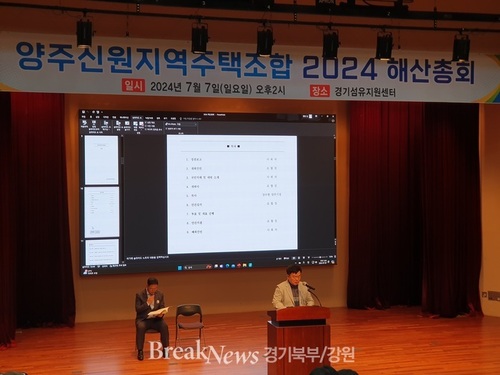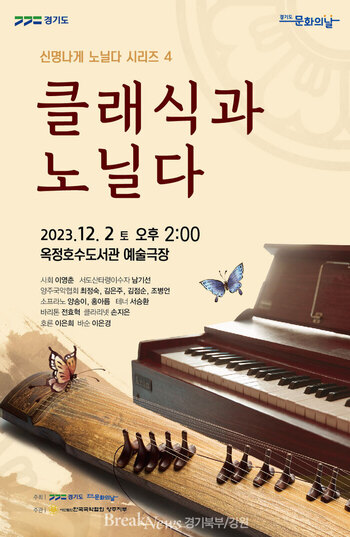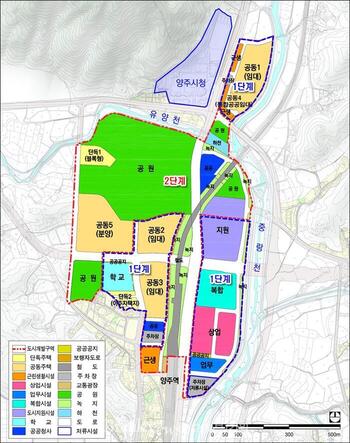푸른 하늘과 산등성이마다 붉게 물든 단풍도 잠시 겨울철 다가오고 있음을 실감하게 되는 요즘이다. 오랜 기간 소방관으로 살다 보니 요즘처럼 일교차가 클 때면 마음에 큰 걱정이 하나 생긴다. 그 이유는 심혈관 질환 환자가 증가하기 때문이다.
심혈관 질환은 전 세계 사망 원인 1위, 한국인 사망 원인 2위로 지난 2020년 국내에서는 전년 대비 4.2%로 가 증가한 약 3만2천 명이 사망했고 매년 사망자가 증가하는 추세다.
대표적인 심혈관 질환인 협심증은 관상동맥이 70% 이상 막히게 되면 증상이 나타나게 된다. 운동을 하거나 과식하거나 날씨가 추운 경우, 또는 정신적으로 스트레스를 많이 받은 상황에서 가슴 중앙 부위에 죄는 듯한 압박감 혹은 쥐어짜는 듯한 통증이 팔이나 목, 등으로 퍼지게 된다. 소화가 잘 안되거나 더부룩한 느낌이 있는 경우도 있고, 심장의 감각 신경이 둔하여 심장 통증을 제대로 느끼지 못해 아무런 증세가 없는 경우도 있다. 많이 진행하면 숨 쉬는 게 어려워지고 심장이 불규칙하게 뛰거나 갑자기 정지하기도 한다.
급성 심정지환자를 살리기 위해서는 평소 심폐소생술과 자동 심장충격기(AED) 사용법을 미리미리 익혀둬야 한다. 심폐소생술은 정지된 심장을 대신해 심장과 뇌에 산소가 포함된 혈액을 공급해주는 아주 중요한 응급처치술이다. 심정지 후 6분 안에 응급조치를 받으면 생존율이 3배까지 높아지는데 실제 가정에서 심폐소생술을 받은 경우는 10명 중 1명도 안 된다고 하니, 심폐소생술에 대해 미리 숙지하고 응급상황 발생 시 적절히 대처하는 것이 중요하다 할 것이다.
심폐소생술 방법은 현장의 안전을 확인한 후 환자에게 다가가 어깨를 두드려 의식을 확인하는 것이 우선이다. 만약 환자의 의식이 없다면 심정지의 가능성이 높다고 판단하고 주변 사람에게 119신고(환자 수, 상태 및 응급처처 상태)와 자동심장충격기를 요청해야 한다.
다음으로 환자의 호흡을 확인해야 한다. 환자 가슴의 오르내림을 관찰하며 움직임이 없다면 심정지 상황을 바로 알 수 있겠지만 비정상 호흡 중 심장정지 호흡을 인식하는 것도 중요하다. 심장정지 호흡은 매우 느리고 미약한 호흡 또는 간헐적으로 헐떡이는 호흡을 말하며 심장정지 직전 첫 수 분간, 또는 심장정지 발생 후 초기 1분간 40% 정도에서 나타날 수 있어 심장정지 호흡을 심장정지의 징후라고 인식하는 것이 신속한 심폐소생술을 진행하고 소생 성공률을 높이는 데 매우 중요하다.
가슴압박을 하기 위해서는 환자를 바닥이 평평하고 단단한 곳에 환자를 눕힌 후 가슴 중앙(흉골)의 아래쪽 절반 부위에 깍지를 낀 두 손의 손꿈치를 댄다. 양팔을 쭉 편 상태로 체중을 실어 환자의 몸과 수직이 되도록 가슴을 압박한다.
이때 속도는 성인 기준 분당 100~120회이며 깊이는 5㎝(소아 4~5㎝) 정도로 강하고 빠르게 시행하며, 119구급대가 도착하기 전까지 또는 환자의 의식이 회복될 때까지 반복하면 된다.
만약 당황한 나머지 심폐소생술 방법이 생각나지 않는다면 119에 신고 후 스피커폰 모드 또는 영상통화를 하면 119상황실 직원이 심폐소생술을 시행할 수 있도록 자세하게 설명해 주니 두려워하지 않고 침착하게 안내에 따르면 된다.
경기소방재난본부는 ‘심정지환자’ 생존율 향상을 위해 다각적인 노력을 하고 있으며 ‘심정지환자’ 생존율을 선진국 수준인 10% 이상으로 목표를 설정하고 있다. 이를 위해서는 우리 모두의 역할이 무엇보다 중요하다.
응급환자 발생 시 119에 신고한 후 발만 동동 구르는 상황에서 벗어나 적극적인 심폐소생술 시행자가 된다면 구급대원도, 의료진도 아닌 최초 목격자인 여러분이 시행하는 심폐소생술이 꺼져가는 생명을 살릴 수 있다.
시민 모두가 내 가족과 이웃의 생명을 살리는 심폐소생술 익히기에 적극적인 관심을 가져야겠다.
*아래는 위 기사를 '구글 번역'으로 번역한 영문 기사의 [전문]입니다. '구글번역'은 이해도 높이기를 위해 노력하고 있습니다. 영문 번역에 오류가 있을 수 있음을 전제로 합니다. *The following is [the full text] of the English article translated by 'Google Translate'. 'Google Translate' is working hard to improve understanding. It is assumed that there may be errors in the English translation.
[Contributed] Precious first aid given to others by learning ‘CPR’
These days, the blue sky and the red colored leaves on the ridges make you realize that winter is approaching for a while. I have been living as a firefighter for a long time, so when the daily temperature difference is large like these days, I have a big worry in my heart. The reason is that the number of patients with cardiovascular disease is increasing.
Cardiovascular disease is the number one cause of death worldwide and the second leading cause of death for Koreans.
Angina pectoris, a typical cardiovascular disease, is symptomatic when more than 70% of the coronary arteries are blocked. When you exercise, overeat, the weather is cold, or when you are mentally stressed, a pinching or squeezing pain in the center of your chest spreads to your arms, neck, or back. In some cases, there is a feeling of indigestion or bloating, and there are cases where there are no symptoms because the sensory nerves of the heart are dull and do not feel the heart pain properly. If it progresses too much, breathing becomes difficult and the heart beats irregularly or stops suddenly.
In order to save an acute cardiac arrest patient, it is necessary to learn in advance how to use cardiopulmonary resuscitation (CPR) and an automatic defibrillator (AED) in advance. Cardiopulmonary resuscitation (CPR) is a very important first aid procedure that supplies oxygenated blood to the heart and brain in place of a stopped heart. If emergency treatment is received within 6 minutes of cardiac arrest, the survival rate increases up to three times, but less than 1 in 10 people actually received CPR at home. will do
In CPR, the priority is to check the safety of the scene, then approach the patient and tap on the shoulder to confirm consciousness. If the patient is unconscious, it is judged that the possibility of cardiac arrest is high, and call 911 (number of patients, condition and first aid status) and an automatic defibrillator should be requested from the people around.
Next, check the patient's breathing. If there is no movement while observing the rise and fall of the patient's chest, a cardiac arrest situation can be recognized immediately, but it is also important to recognize cardiac arrest breathing during abnormal breathing. Cardiac arrest respiration refers to very slow and weak respiration or intermittent panting respiration and may occur in about 40% of the first few minutes immediately before cardiac arrest or in the first minute after cardiac arrest. It is very important to perform rapid CPR and to increase the success rate of resuscitation.
To perform chest compressions, place the patient on a flat, firm surface and place the elbows of both hands interlaced on the lower half of the center of the chest (sternum). With both arms straight, put your weight on the chest and press the chest so that it is perpendicular to the patient's body.
At this time, the speed is 100 to 120 beats per minute for adults, and the depth is about 5 cm (4 to 5 cm for children).
If you are embarrassed and do not remember how to perform CPR, call 911 and make a speakerphone mode or video call. The staff at the emergency room will explain in detail so that you can perform CPR, so do not be afraid and follow the instructions calmly.
Gyeonggi Fire and Disaster Headquarters is making various efforts to improve the survival rate of “cardiac arrest patients” and is setting a goal for the survival rate of “cardiac arrest patients” to be 10% or higher, which is the level of advanced countries. To this end, the role of all of us is of paramount importance.
In the event of an emergency, if you call 911 and become an active CPR performer after calling 911, the CPR performed by you, the first witnesses, not paramedics or medical staff, can save a dying life.
All citizens should take an active interest in learning CPR, which saves the lives of my family and neighbors.
이 기사 좋아요
<저작권자 ⓒ 브레이크뉴스 경기북부 무단전재 및 재배포 금지>

댓글
배영환, 가평소방서, 서장, 심혈관, 심폐소생술, 응급처치 관련기사목록
|
많이 본 기사
칼럼·사설 많이 본 기사
|





























